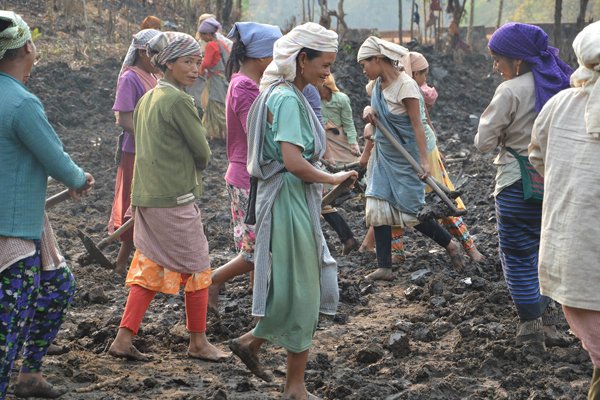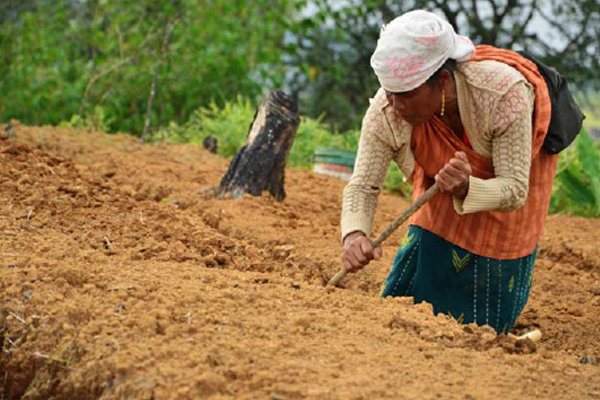Meghalaya hosts national convention on Living Root Bridges
Meghgalaya’s Jingkieng Jri (Living Root Bridge) are trailblazers that not only highlight the symbiotic relationship between Nature and human culture to a global audience, but more so, it focuses on the need to adopt a balanced approach between economy and ecology, something which the state Government has been working tirelessly in the past few years. This was stated by the Chief Minister Conrad. K. Sangma at the National Convention on Community and Science based Conservation Research and Development of Jingkieng Jri held at the state Convention Center, Shillong on Dec 21, 2021.
The National convention witnessed the presence of the Principal Scientific Advisor to Government of India, Prof. K. Vijay Raghavan, scientists from across the Nation including community representatives and members of the Living Root Bridge (Jingkieng Jri) Co operative Societies from across the Khasi and Jaintia Hills and region. Each of them shared the initiatives being taken by their respective cooperative societies towards not only preserving the Jingkieng Jris but also preserving the biodiversity (Flora and Fauna) in and around each Living Root Bridge in their respective villages.
The Chief Minister also stated that as part of World Bank supported ‘Meghalaya Community-Led Landscape Management Project’, the Government of Meghalaya is currently developing a Conservation, Research and Development plan for UNESCO World Heritage Site Nomination of Jingkieng Jri. Under this, Mariang Jingkieng Jri Cooperative Societies are being nurtured within a State level federation to facilitate an equitable development vision for all. Apart from this, a wide array of NRM activities is also being implemented in the State and even through externally aided projects like the World Bank, among others.
Addressing the gathering, the Chief Minister also highlighted the concept of ‘Just Transition’ where he laid emphasis on ensuring a transitional process that is just for all, so that environment conservation is brought about while ensuring livelihoods for the primary force. “As a State Government, we have been extensively working towards Natural Resource Management where we are focusing on creation of livelihood out of the natural resources that we possess, so we use them in a sustained manner and yet create a parallel economy with more inclusive forms of livelihood, while keeping the ecology at the forefront”, he added.
“This National conclave on Jingkieng Jri focuses on just one part of the massive big picture on Natural Resource Management that we are trying to bring about and we feel that the Living Root bridge Conservation project could be a lighthouse project that would bring attention to the need for NRM interventions to preserve the ecosystem while facilitating sustainable livelihoods”, the CM added. He also thanked the community for their support and said that their contribution will go a long way in achieving the long term impact through this Jingkieng Jri Project while also realizing the overall NRM goals.
He said that if the Living Root bridges of Meghalaya receive the UNESCO World Heritage Site tag, it would be more about the larger message that we would be giving to the world that the Living Root Bridge is an ecosystem in itself, supporting many birds, animals, lichen, mushrooms, flowers, trees, serving its simple purpose while allowing the humans to cross over them for their living. The process of making these bridges is an age-old craft, a very much living and alive tradition among the locals in the present age. It is crucial to archive this age-old wisdom of not only making, but more so, conserving the bridges and the related ecosystem.
It may be mentioned that many such living root bridges in the forests are conserved by the communities of Meghalaya in the customary practice of preserving the sacred groves known as ‘Law Kyntang’. These forests also possess a huge resource of medicinal plants and herbs. There lies a dire need for the larger world to go back to its roots and respect nature once again.
Speaking at the event, Prof. K. Vijay Raghavan, the Principal Scientific Advisor to Government of India said that the Living Root Bridges of Meghalaya which highlights the socio-cultural, social and botanical links among people and Nature is well deserving of the tag of UNESCO World Heritage Site due to the rich micro as well as the macro world associated with the Jingkieng Jri, which will also initiate the need for their preservation and conservation.
In his opening remarks, Sampath Kumar, Principal Secretary to the Government of Meghalaya and CEO, MBDA, said that the confluence of both scientists and people from the grassroots together in one platform is a wonderful idea. While the traditional knowledge of living root bridges is ancient, research on their ecosystem has become altogether more important to improve their conservation.
The community representatives of the Jingkieng Jri cooperatives spoke at length at the National conclave and shared their experiences and unique initiatives. They highlighted interesting activities being undertaken by them, which involved not only keeping alive the age old craft of building the living root bridges and preserving them but also their involvement in a wide array activities such as preserving medicinal herbs, keeping traditional games alive, handicraft activities, planting fruit seedlings, protecting the natural habitat in and around the root bridges. The event also witnessed performances from the community members of the Jingkieng Jri Cooperative societies.
Iora Dkhar, Chairperson of the Syrwet u Barim Mariang Jingkieng Jri Cooperative Federation Ltd., spoke on the importance of cooperatives for bringing about collective action among communities to preserve the knowledge and skills that have evolved through generations.
The conclave saw the presence of Scientists from all over the country representing Geological Survey of India (GSI), Botanical Survey of India (BSI), Zoological Survey of India (ZSI), Indian Institute of Science (IIS), Forest Research Institute, and Center for Environmental Planning and Technology University. Presentations on the observations made from various site visits were shared by the scientists who included Dr. A.A Mao, Director, Botanical Survey of India, Dr. Dhriti Banerjee, Director, Zoological Survey of India, Dr. C. Murugan, Scientist, Botanical Survey of India, Dr. Lucy Nongbri, Post Doctoral Research, Renee M Borges Lab, Indian Institute of Science, Prof. Renee Borges, Center for Ecological sciences, Indian Institute of Science, among a group of about 50 scientists and environment specialists.
The National Convention is a follow up of the field visits made by the scientists wherein they came across unique species of orchids, amphibians, and mammals which have not yet been reported from anywhere in the country. The field visits also revealed key findings that indicated urgent need for attention to strengthen conservation measures for these unique living structures. The scientists in a unanimous voice said that the living root bridges are a house of several critically endangered species of flora and fauna and therefore are definitely a reason to be considered as a UNESCO World Heritage site.


